***This feature appears in the April issue of Animation Magazine (No. 289)***
It has become an annual spring tradition here at the magazine to highlight a talented group of up-and-coming animation professionals who are achieving great things in the next few months. This year, we were truly blown away by the amount of talented and diverse artists who are working on top-quality projects in various media. That’s why we had to expand our spotlight from the dozen profiles of previous years to 2019’s Special 16. We know we’ll be writing about their amazing achievements for many years to come.

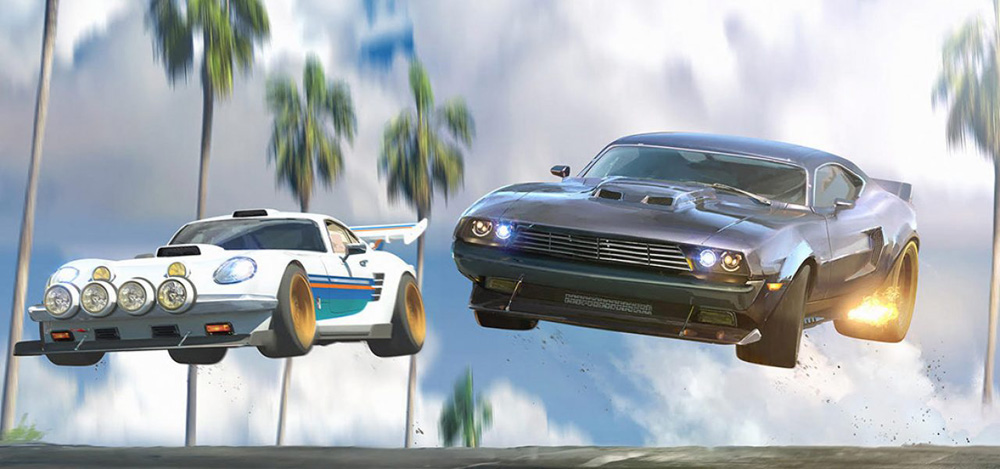
Christine Bian
Art Director, Fast & Furious series,
DreamWorks Animation Television
Although Christine Bian is only 33, she has already worked on two of the biggest animated TV series of the past few years: She won an Annie as production designer for Nickelodeon’s The Legend of Korra and was design supervisor on DreamWorks’ Voltron: Legendary Defender. Now, the Foster City, Calif. native is tackling another big franchise: DreamWorks TV’s upcoming animated show based on the Fast & Furious movies, where she is in charge of industrial, mechanical and vehicle designs in the action-heavy project.
“I was fortunate enough to have a lot of helping hands along the way,” says Bian. “But I owe getting my first job to the Concept Design Academy, and in particular the man who runs the school, Kevin Chen. He showed my portfolio to Nickelodeon, and I was hired as prop designer on Korra. I met a group of unforgettable people there, and the rest is history!”
Bian says she first became interested in animation when her mom allowed her to watch the series Maya the Bee after school, before her naptime! “I always wished the episodes would last longer, so I didn’t have to take a nap!” she remembers. “My absolute hands-down favorite was Disney’s Bambi. I watched that VHS until the tape broke! My animation idols are Frank and Ollie, Milt Kahl … all those Golden Age animators. They brought my childhood to life!”
The talented artist says she has loved working with her crew on Fast & Furious this past year. “For me, it’s always about the people I get to work with, and they make coming in to work every day fun and exciting.” However, she admits that balancing the needs of the show against the time they are given to make it can sometimes be a challenge. “I think the universal struggle of every professional artist working in the industry is fighting the desire to polish every single thing to perfection. Knowing to let go is not as easy as it sounds!”
She leaves us with some great tips for surviving in the business: “Be kind. Its an old adage, but our industry is small, and people will remember your attitude towards them long after a project is done. A good crew spends so much time together … more time than we spend with our loved ones, sometimes! so I personally believe that the value of a team player is worth more than just the sum of their skill sets.”
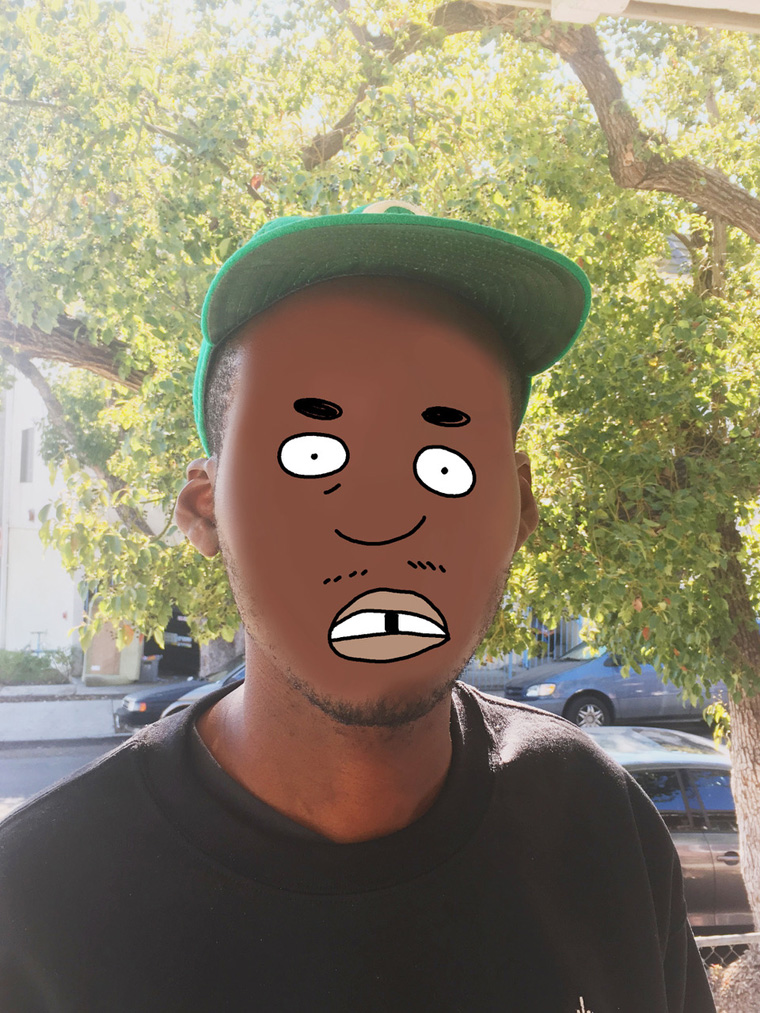
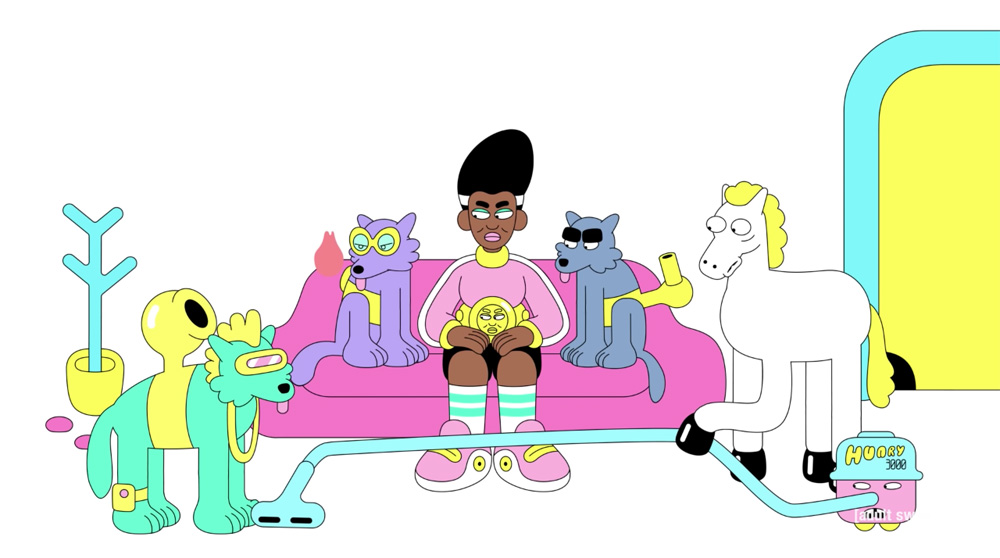
Henry Bonsu
Creator, Lazor Wulf
Adult Swim
Take one look at Henry Bonsu’s brilliant new animated series Lazor Wulf, and you can tell he is a true fan of classic UPA toons and old-school Hanna-Barbera. The gifted 34-year-old creator, who grew up in East Orange, N.J. and Philadelphia, loved cartoons and drawing comics at an early age. “I watched everything back then,” he says. “I loved Tiny Toons and Animaniacs, and even watched the animated show based on Jumanji!”
After studying animation at the Art Institute of Philadelphia, he moved to San Jose, Calif. “I was living with a couple of my friends and dreamed about making a cartoon about a wolf with a laser on his back,” he recalls. “At night, I made a comic about it, and I put it on the Internet. It just grew from a joke and became this Tumblr comic.”
After Adult Swim exec producer Dan Weidenfeld discovered the comic online, Bonsu was invited to come to L.A. and make the show at Bento Box. “I just pitched the show to him, and he got me to meet some dope folks,” he recalls. “We have a team of about 30 people. The studio in Atlanta works on the animation, and we do the boarding and preproduction and animatics in L.A.”
Bonsu says he’s beyond thrilled to be able to create animation that he can stand by and which speaks to people. “I want to make stuff that people enjoy. I think it’s important for black folks to realize that they can also make animation like this and create things that speak to them and their audience. But you can’t stop on your laurels. You always need to be motivated to make things better. It all comes down to people opening doors and providing you with platforms to express your view. Other people did it for me, and I hope I can do the same for a new generation of animators.”
“Cartoons are a major part of my black experience,” he adds. “They are a dope medium to tell stories and showcase ideas. It takes time and patience, but you got to be consistent with your goals. Make sure what you’re making has the energy and authenticity you envisioned. Then stand up for it and speak to it when you’re challenged. But also, open yourself up to being wrong. Know that messing up is part of the process, and can result in growth!”
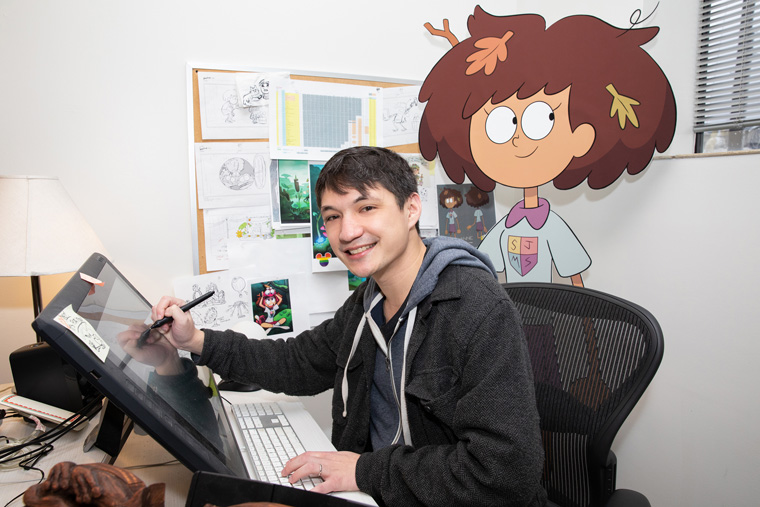
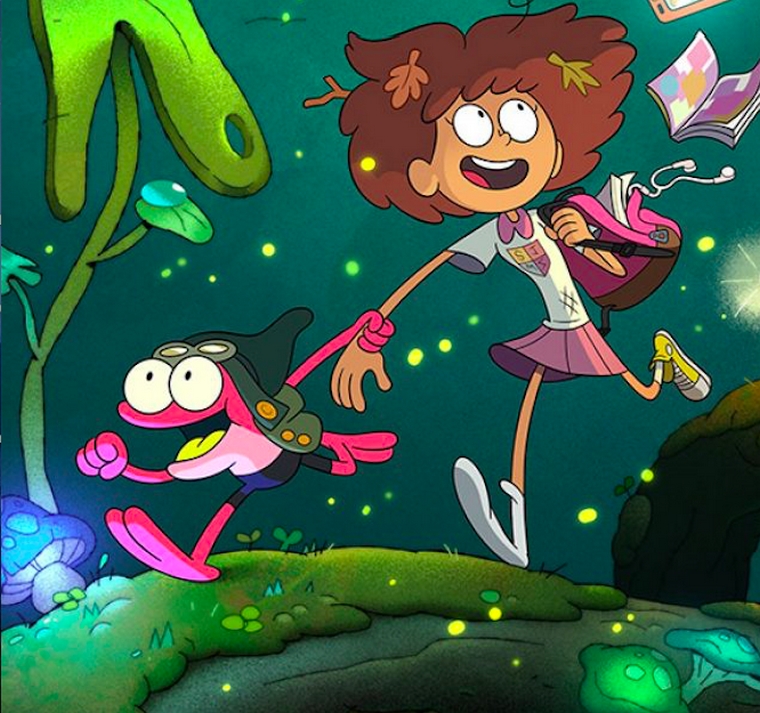
Matt Braly
Creator, Amphibia
Disney Channel
When Matt Braly was a young boy, he loved to doodle Mortal Kombat, Transformers and Pokemon characters on paper, but it wasn’t until Pixar animator Bobby Podesta visited his high school in Sacramento that he realized he could pursue a career in animation. “I became completely obsessed,” says the talented 30 year old. “I immediately signed up for life drawing classes at the local community college and set my sights on getting into CalArts.”
After college, a storyboard apprenticeship at DreamWorks put him on the right career path, which eventually led to the storyboard artist position on Gravity Falls. “It was a very competitive selection process that involved submitting a storyboard test using characters from Kung Fu Panda,” Braly recalls. “When they told me I got the job, I remembered dancing around my grandmother’s house to Hall & Oates’ ‘You Make My Dreams.’”
His much-anticipated new Disney Channel show Amphibia centers on a self-centered teenage girl named Anne who befriends a helpful frog named Sprig after she finds herself in a marshland populated by frog people. Braly says he was inspired by the work of two of his animation idols, Nick Park and Hayao Miyazaki. “When brainstorming ideas for my own project, I knew I wanted to accomplish something similar to the Pacifica Northwest character in Gravity Falls. I wanted to create a story/character that was about change and growth. I also mined by own life and experiences to create a character and world as genuine as possible. For example, Anne’s Thai heritage is directly inspired by my own background.”
He also believes that while running a show can be grueling, it can also be the best job in the world. “Seeing Anne and Sprig come to life has been one of the most rewarding experiences of my life.” He adds, “It’s important not to compare yourself to others too much. We all grow at incredibly different rates. I remember getting really discouraged in school when I would see how much better everyone’s work was and often felt like I was lagging behind. If I could do it all over again, I would try to loosen up a bit more and just have fun. You’d be surprised how often that produces the best work!”

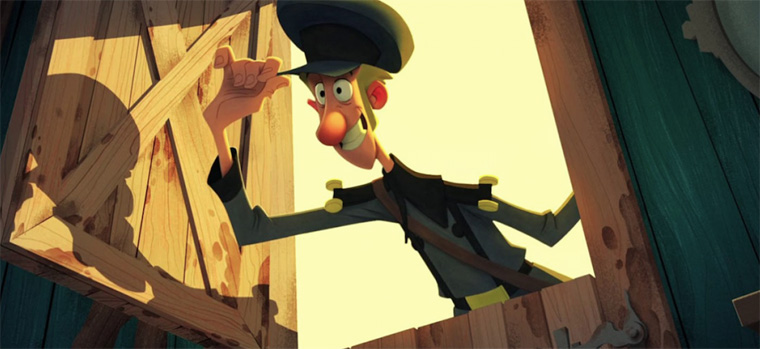
Cecile Carre
Animator, Klaus
SPA Studios, Netflix
French animator Cecile Carre received a lot of attention after co-directing Mary, one of the Annecy opening shorts in 2015. She always loved animated movies as a kid, but didn’t think she could make a career out of it. So she was 24 and working as an engineer when she decided to apply to the prestigious French animation school Gobelins. “I realized that the animation industry was actually full of opportunities, particularly in France, so I decided to take my chance, and studied (and practiced) hard to get into Gobelins and learn the skills needed to be part of this world,” she tells us.
As a young girl growing up in the French department of Réunion Island, Carre loved drawing and was interested in comic books, which are widely loved in her home country. “I grew up on Disney movies and later discovered the world of Miyazaki films,” she notes. “But I didn’t watch any animated shows on TV, because they were forbidden in my house!” She says her favorite movies are Alice in Wonderland, The Nightmare Before Christmas and Coraline, and her animation idol is legendary Disney animator Milt Kahl.
These days, the 30-year-old artist is working on the much-anticipated 2D feature Klaus, directed by Sergio Pablos, which is premiering on Netflix in December. She says she remembers being very impressed by the film’s proof of concept teaser, so she was thrilled when Pablos contacted her to work on the project. “I started working there right after graduating in 2017. At the time, the production hadn’t started yet, so I offered my services as a story artist since I had got a bit of experience working on my graduation film Burn Out. So, I worked on the story for one year and then I moved to the animation team.
Carre says she loves the movie’s character designs, the backgrounds, the animation, the colors and the lighting, as well as the comedic and emotional tone of the overall project. “If you press pause, you will see that every frame of the movie is a beautiful illustration — and I am not exaggerating!” she points out. “But it is hard for me to take some distance and be objective. I really hope the audience will like it. But for sure the animation lovers will appreciate the amount of work accomplished!”
Overall, Carre say animation never ceases to her amaze her. “With storyboards, you can tell so much with a few drawings. There is something more rewarding in the storyboard process in having a bigger influence on the story and more freedom. But you will never see your drawings on the screen!”
She leaves us with a simple piece of advice. “It may sound cheesy, but work with love. What I mean is that I think that it is only by loving and enjoying the process of creating/building something that you can make it really good. And if you love the process, it feels almost effortless, not like a job. So of course you should give yourself some challenges, but allow yourself to take pleasure in it.”
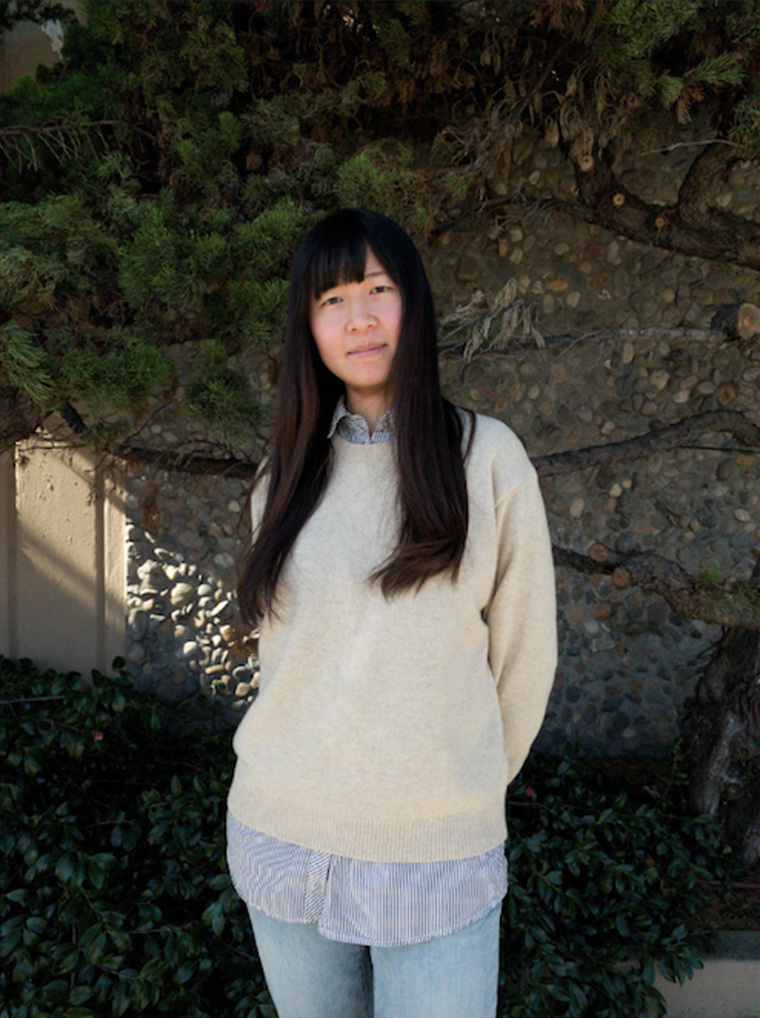
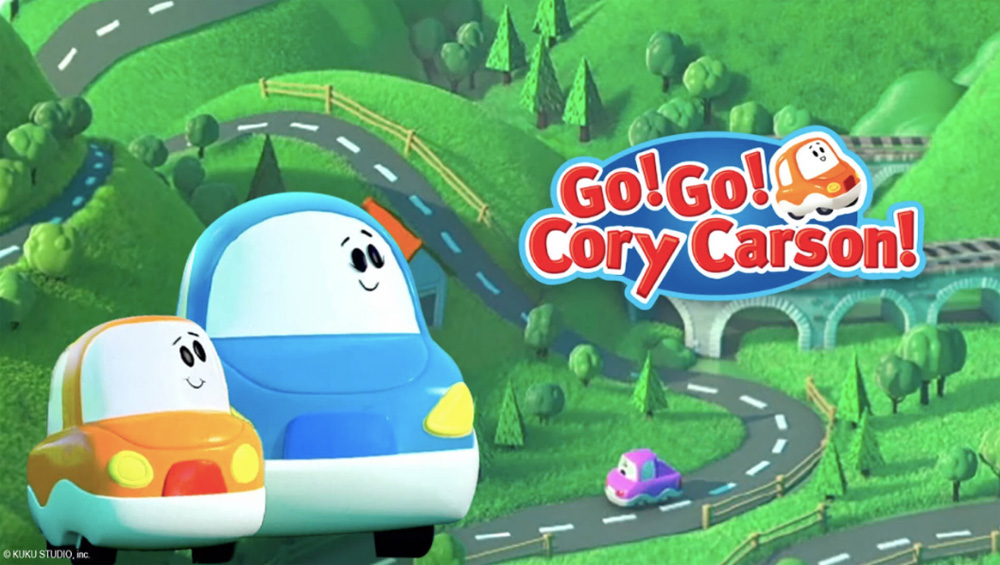
Ying-Hsuan Chen
Storyboard Artist, Go! Go! Cory Carson
Netflix
Like many of the artists of her generation, Ying Hsuan Chen was inspired by classic Hayao Miyazaki movies such as Princess Mononoke. But the 30-year-old storyboard artist, who was born in the town of Taichung, Taiwan, says she connects to the movie on many different levels. “There are many elements in the film that I was able to relate at a personal level because of its down-to-earth quality. I also spent half of my childhood in the countryside so I have a soft spot for nature. My fondness for the film has not faded with time. I have also always wanted a pet like Yakul!”
An internship at Gammage Animation Studio led to a full-time job at the Toronto-based shop and work on projects such as Nut Job 2 and Barbie: Starlight Adventure followed. “I decided to take time off from school and join the team, but it was a bumpy road because not a lot of people around me had taken this same path,” she tells us. “But I had learned a ton on the way. This experience not only kickstarted my career but also changed the shape of my career. I have learned how to be proactive in terms of looking for opportunities and how not to be afraid of straying from the ‘this is how everyone else does it’ career path.”
This past year, Chen has been enjoying her job as a storyboard artist on Go! Go! Cory Carson, Netflix’s new preschool show, exec produced by Kuku Studios’ Alex Woo, Stanley Moore and Tone Thyne. “Their vision for the series has been very endearing with lots of potential. While the show is originally designed for preschool audiences, Kuku has aimed to make the show enjoyable to both children and adults. The storyboard artists are not only responsible for creating visual representations of the story outlines, but also for actually writing the story from time to time. This is an opportunity and responsibility that you don’t come across often at other places.”
Chen encourages young animators not to be afraid of trying new things. “Sometimes we have to try out what we don’t like in order to find out what we really like, what fits us the most,” she notes. “Everything you learn and experience on the way to achieve your goal will become useful at one point. I believe if you take a curved path to find your goal, you will end up with more than if you were to just go straight to it!”
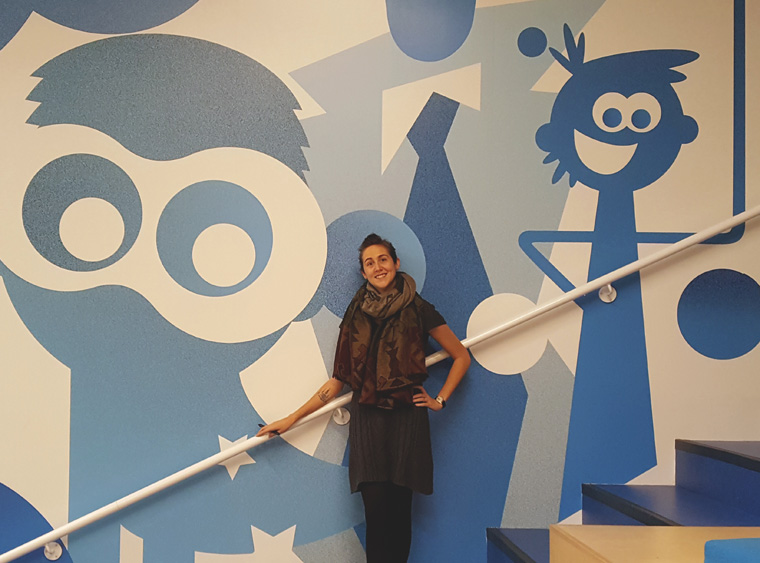
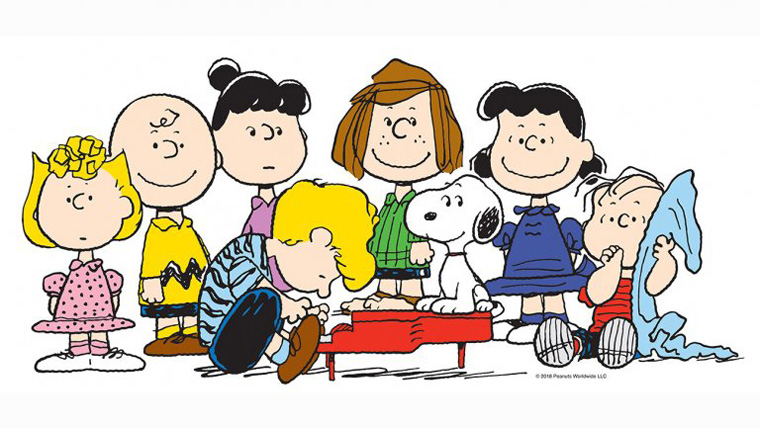
Mélanie Daigle
Animation Director, Peanuts Series
DHX Media
Animation director Mélanie Daigle remembers being laughed at during one of her internship interviews for being in an animation program (at Sheridan College) that was still teaching animation on paper. “I feel very fortunate that I got my start in animation during the notorious slow years after the recession,” she says. “I graduated from Sheridan’s classical animation program in 2010 and got my first animation job after meeting studio representatives on our industry day!”
The studio that took a chance on the young French-Canadian native was Nelvana in Toronto. She recalls, “I learned Toon Boom Harmony on the job, and I’ve been applying, adapting, and refining those same classical animation skills in that software ever since.”
After working on the My Little Pony feature, Daigle is currently directing a new DHX Media series featuring Charles M. Schulz’s beloved Peanuts characters.
“Having grown up as a French-Canadian kid in the small village of Saint-Louis-de-Kent on the east coast of New Brunswick, most of the humor of Peanuts flew right over my head,” she admits. “It wasn’t until I was in college and re-examined A Charlie Brown Christmas more closely that I started to grasp its genius. Pulling together reference over the past few months, and analyzing what’s been done before to create a style guide for our animation team, has made my inner nerd so happy!
Daigle says doing justice to the world of Schulz and animation icon Bill Melendez has been her team’s biggest challenge. “Not only are we dealing with tricky models that were influenced more by cartooning than by the usual animation conventions, but they also have such a distinctive way of moving. Not to mention that we’re adapting a property that’s so well known for its classical paper animation into a completely digital medium! It’s definitely, in the best way, the most humbling project I’ve been involved with.”
A major fan of Disney’s Nine Old Men, Daigle says her biggest joy has always been animating. “There’s something so magical and satisfying about getting completely lost in a character, and figuring out how to deliver the most genuine performance possible,” admits the 31-year old. “It’s something I don’t want to stray too far away from. That said, I’m definitely feeling the itch to further develop my voice, and I’m becoming more and more interested and passionate about content. Years of animating female characters that were developed under male direction eventually gets to you!”
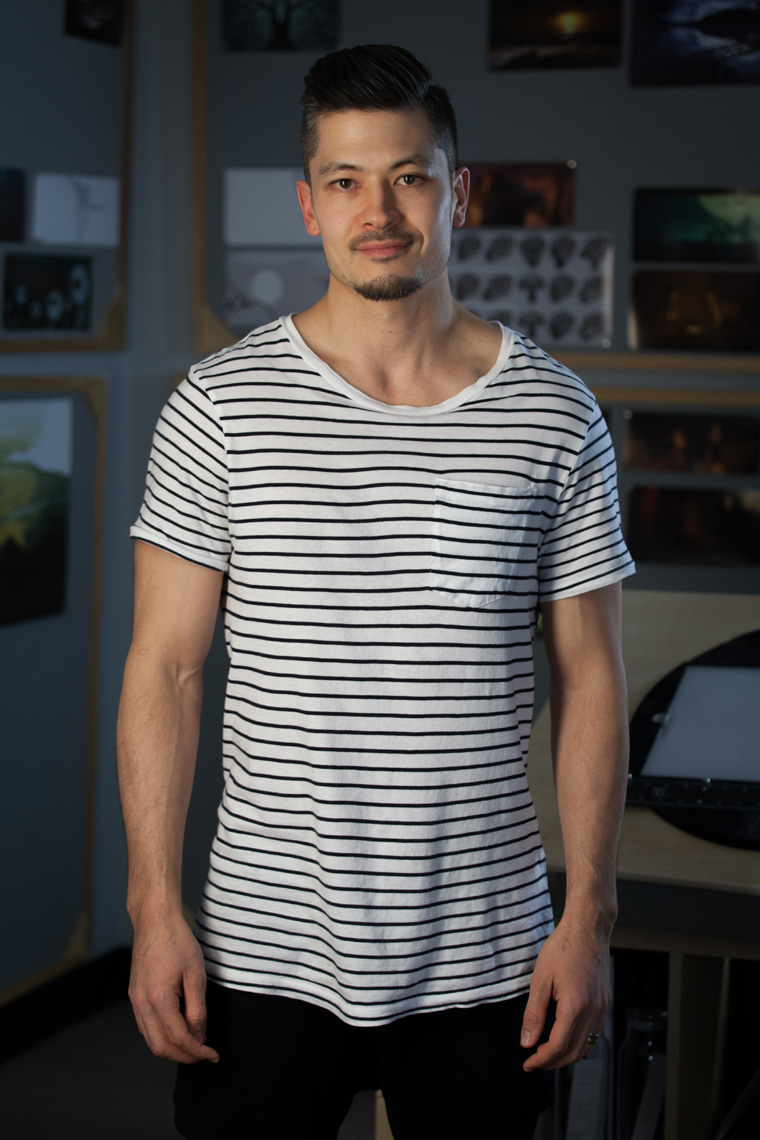

Trevor Dalmer
Concept Artist, Missing Link
Laika Studios
Over the past 10 years, Trevor Dalmer has made quite an impact at Portland’s Laika Studios, working as a concept artist on ParaNorman, The Boxtrolls, Kubo and the Two Strings and this year’s much-anticipated Missing Link. Now, he has already taken on the role of production designer for the studio’s sixth movie. The Ontario native says he was always interested in drawing, but it wasn’t until he was in his late 20s when he decided to study animation at Sheridan College and pursue a career in animation. “I took a risk by totally changing my career path to pursue a childhood passion for art, and luckily it seemed to pay off,” says the talented 41-year-old artist.
After graduating from Sheridan, he began working at Chuck Gammage Studio in Toronto, which led to the jobs at Laika. “I have a dream job where I get to earn my living by painting and creating all day long,” he tells us. “I’m surrounded by the world’s most amazing animated artists, craftspeople and technologists. Because we build everything practically in the real world, the artwork leaves the computers and takes form within our building. Every day is like coming to work in a secret wonderland that’s being safeguarded until the time comes to reveal it to the world and provide excitement and enjoyment to millions of people of all ages.”
One of his favorite memories at the studio goes back to his early days of working on ParaNorman. “The film’s production designer Nelson Lowry, who has been such a great mentor, looked at the first decent piece of artwork I had created and said, ‘Oh, good. I worried that I had made a big mistake hiring you!’ That was a very good day!”
Dalmer says one of his favorite movies and a big influence on his work is Disney’s 1967 classic The Jungle Book. “Something about the music and character animation has always been so alluring and hypnotic to me,” he says. “Maybe it was the snake?”
The Laika veteran encourages animation hopefuls to hold their work up next to examples of professional work and observe it objectively. “I think about my own work as I was starting out and wonder how I didn’t see some of the obvious differences,” he admits. “I wish someone would have told me to be more critical of my work and to aim higher. I think it can be a disservice to over-encourage young artists and make them feel like their potential is good enough.”
When asked about his future plans, Dalmer says that’s hard to think about because he is so happy in the now. “I’m excited for the world to see Missing Link and for all of my coworkers to feel proud of their contributions. Since I also worked on the it, I’m glad that my five-year-old daughter, Ophelia, will finally get to see ‘Daddy’s movie’ as she calls it. (Sorry, director Chris Butler!)”


Lino DiSalvo
Director, Playmobil: The Movie
ON Animation
“When I was a kid, if a TV show or movie had animation or puppets in it, I watched it!” recalls Lino DiSalvo, the director of this summer’s eagerly awaited Playmobil: The Movie. “Sesame Street, The Muppet Show, Tom and Jerry, The Warner Bros. shorts … but my favorites were Bugs Bunny, The Aristocats and The Jungle Book!” He also recalls being more interested in drawing than anything else, so that got him in trouble at school. “Then, I remember being a teenager and realizing that animation could be a job; the idea that people got paid to draw, to play make believe, blew my mind! I went to Vancouver Film School after seeing Toy Story in 1995. That movie changed everything for me. I knew, at that moment, being a CG animator was what I was going to do.”
After graduating from VFS, DiSalvo was hired by Disney’s Dream Quest Images. His first big project was animating the little dashboard robot character on Inspector Gadget, followed by work on projects such as Reign of Fire, 102 Dalmatians and Kangaroo Jack. Eventually, he moved to Disney Feature Animation to work on Chicken Little, Meet the Robinsons and Bolt. He was then tapped to work as supervising animator on Tangled and became the head of animation on Frozen.
Over the past few years, he used everything he learned at Disney to bring to life ON Animation’s world of Playmobil characters. “If I learned anything working at Disney it’s that you have to do the research I have two kids, a two-and-a-half-year-old girl and a five-and-a-half-year-old boy. We have a lot of toys at home, including both LEGO and Playmobil. We love them both, but my kids play with those toys very differently. I would say what LEGO is to construction, Playmobil is to role playing. I wanted to make sure I reflected that idea in the film. Marla, a human character, literally gets turned into a toy and ends up in a magical world.”
DiSalvo says he strove to make sure the movie had an honest, emotional core to it. “Yes, it has to be funny and entertaining, but I wanted to make something that would take you through an emotional journey,” he notes. “It’s something I think Disney films do really well. They have simple plots with complex characters.”
The creative talent says he will always look to Disney’s Frank Thomas, Ollie Johnston and Milt Kahl as role models. “I was also lucky enough to work with Glen Keane for many years. Glen made me a better animator. I love Glen’s acting choices — honest and subtle, but pushed at the same time. The experience of working with him on Tangled was one I’ll never forget.”
Offering advice for animators, he suggests that they should study acting and acting theory. “Take life drawing. Take improv. Read The Illusion of Life twice a year for the rest of your life. If your demo reel only has a few scenes, make sure they are well acted. I could live with an animation test lacking polish, but the acting choices have to be legit. Get the acting right and you’ll get a job anywhere. I’ll hire you!” he says with a smile.
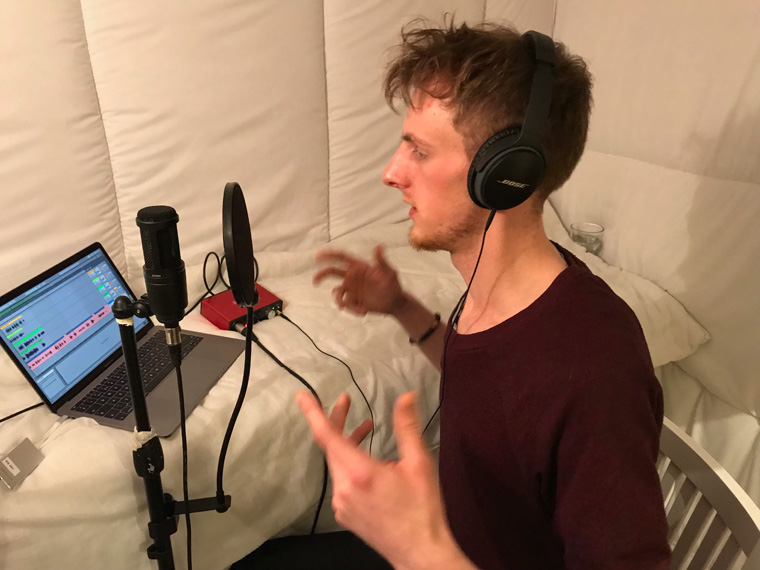
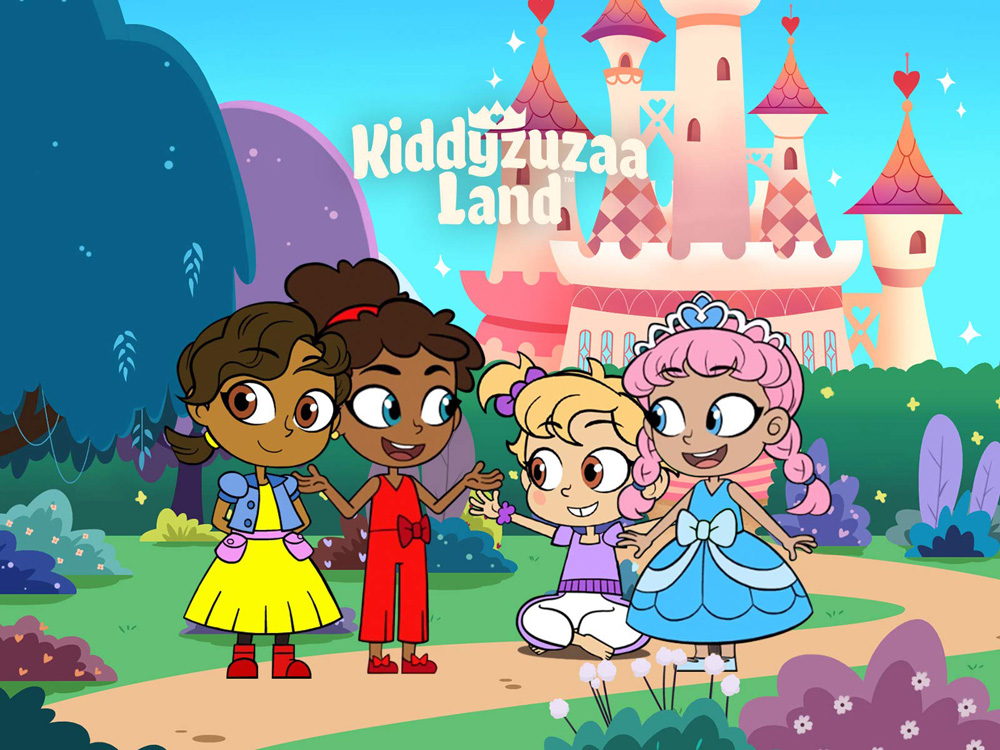
Tom Gidman
Creator, Kiddyzuzaa Land
WildBrain
If you’d like to get a career in animation, you may consider brushing up your live comedy skills. Just ask Tom Gidman, creator of WildBrain’s online animated series Kiddyzuzaa Land. The Oxford, U.K.-born artist was fresh out of university and had no production experience — “But I saw an ad in the newspaper, so I went to their offices, handed them my CV, and it all went from there,” he recalls. “I I have a background in performing comedy, which definitely helped!”
Gidman started out working on live-action shorts for the studio. “It was my first job out of uni and all I really knew at the time was that I wanted to make fun, funny and entertaining videos with good, strong stories,” he says. “It wasn’t until we were tasked with making an animated version of the live-action show Kiddyzuzaa that I suddenly realized how much animation combined so many of my creative interests: writing, voiceover, story and comedy. So, that was the starting point, and I’ve massively enjoyed working on animated shows as a writer/director/occasional voiceover ever since.”
The talented 24-year old counts The Simpsons as one of his major influences. “The show’s humor, at its peak, is just so strong, and the same goes for the voice acting,” he states. “Futurama and Family Guy are right up there, as well as Wallace & Gromit, Woody Woodpecker, SpongeBob, Looney Tunes, Dennis the Menace — the list goes on. In terms of films, the ones I have the closest attachment to are probably the old Disney classics — The Sword in the Stone, Robin Hood, Peter Pan.”
For Gidman, there are many positive aspects of creating animated content for YouTube and VOD platforms. “We deal with lower budgets and faster turnarounds, but there are lots of awesome things about it as well: Stuff gets made (you don’t need years of development time!). You can learn a lot by trial and error and throwing yourself into new challenges. You have creative freedom. Whilst you’re limited by certain things, there really is a sense that you can try things out. The teams are small, so you can do a bit of everything.”
Looking at current trends, Gidman has the following insights: “The media landscape is constantly changing so much, so be prepared to adapt and be savvy about what’s popular, be it animation styles, format, length. At the same time, obviously try to be original and tell fresh and unique stories. You should also know your world and your characters inside out before jumping into a project. Finally, be collaborative! The best stuff comes out of people working together, and it’s infinitely more rewarding to share in a show’s success (or indeed, failure)!”
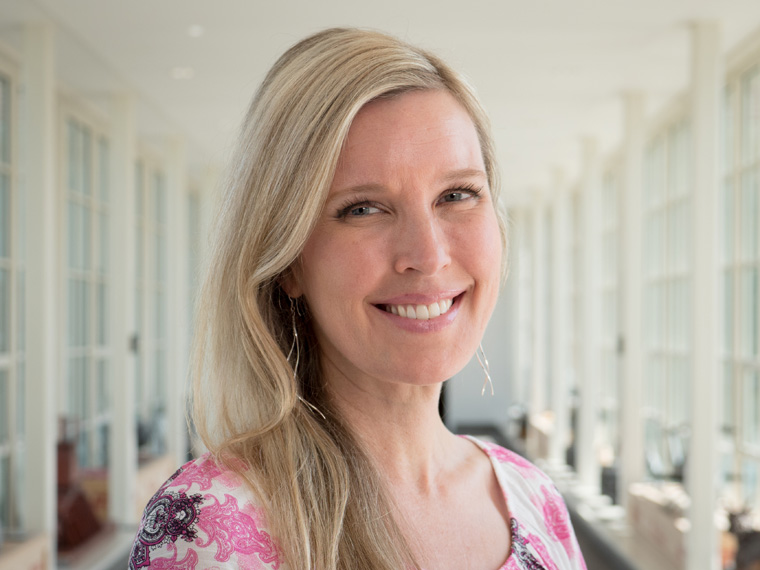

Maia Kayser
Animator, Avengers: Endgame
Industrial Light & Magic
ILM’s brilliant animator Maia Kayser says she owes her career path to the dinosaurs of Jurassic Park. Seeing the CG characters interact seamlessly with the live actors piqued her interest in the possibilities of vfx and realistic CG on the big screen. “At the time, that film was also a breakthrough in technology and had some of the most realistic CG I had ever seen,” she recalls. “Suddenly, telling a fictional story in a realistic way seemed limitless.”
The Buenos Aires native, who grew up loving movies such as Ghostbusters, Back to the Future and E.T. the Extra-Terrestrial, landed an internship at ILM in 2001 after studying visual communication design in Germany and electronic at SCAD. Some of her recent projects have included Solo: A Star Wars Story, Star Wars: Episode VII, Rogue One, Rango and Jurassic World: Ancient Futures VR. She also worked on rides and VR projects such as Tomorrowland, Race through New York Starring Jimmy Fallon and Star Tours: The Last Jedi. She is currently working as an animator on Marvel’s tentpole movie Avengers: End Game.
“The aspects I like about my current project is working with a large pool of talented people,” says Kayser. “What makes morale high, is the collaborative crew and strong team spirit on this show. Of course, as an animator, I’m also enjoying the wide variety of characters and challenging performances on this project, which for me, makes it particularly interesting.”
She says one of the biggest challenges of the job is that there’s a general assumption that computers do all the work. “Even though we use computers and software to aid in the production of these movies, they are only tools, and it takes an army of talent to craft a film with high-quality visual effects,” she explains. “Motion graphics and visual effects have become so common in film today that the effort it takes to create these images is often overlooked, resulting in tight deadlines and demanding hours at times.”
Kayser says it’s really important for vfx jobseekers to educate themselves on what is happening in the industry. “With the explosion of augmented and virtual reality, we’re in an exciting moment in the world of computer animation, allowing for many promising opportunities beyond just film,” she notes. “I encourage newbies to do their research, look into these opportunities and stay open to all available options. I also recommend attending industry eventarts s and conventions, because they are also very motivating and inspire imagination and creativity.” In short, she says it’s all about setting high standards and being bold enough to pursue those goals without giving up. “Always seek knowledge and growth, because there is no end to your education,” she concludes.
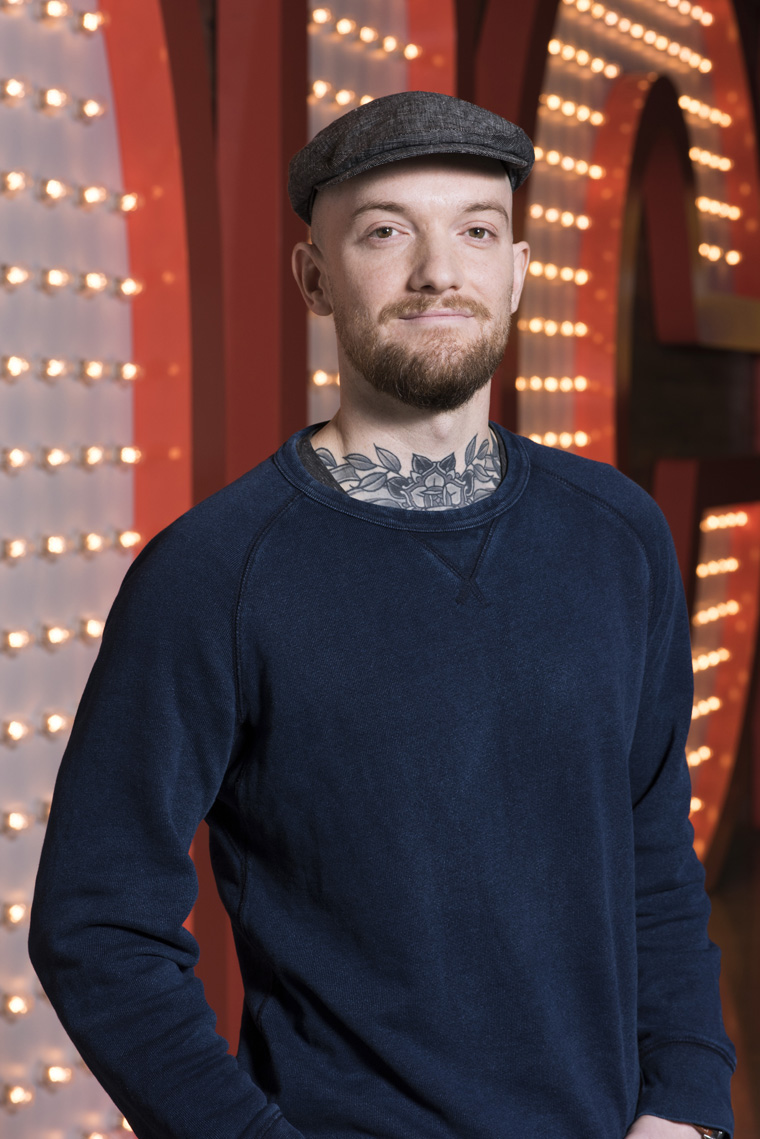
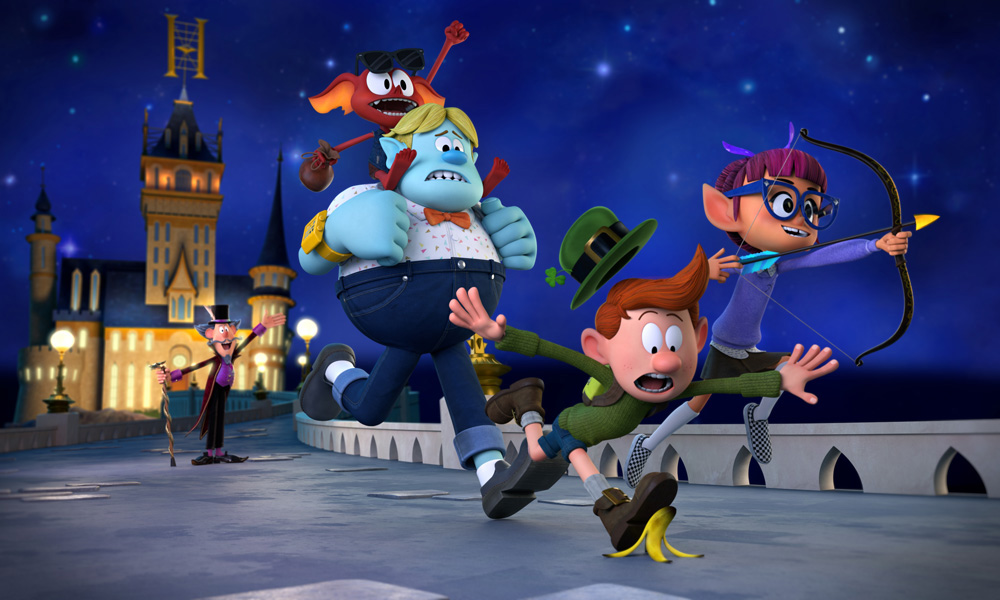
Casey Leonard
Director, Lucky; Producer Wonder Park series
Nickelodeon Animation Studios
Never underestimate the role that chance or a broken arm can play in your animation career. Take, for example, the case of Casey Leonard, who had just graduated from Massachusetts College of Art and Design with a degree in Studio for Interrelated Media. “My first job in animation was out of pure luck,” he tells us. “Soup2Nuts studio in Boston was on a hiring frenzy, and a buddy who was about to start there broke his arm snowboarding, so he recommended me for a character animator job. To this day, that was one of the most challenging gigs of my career!”
This past year has been a busy one for the 38-year-old upstate New York native. After years of directing Nickelodeon’s popular series Breadwinners, he directed the new Nick TV movie Lucky and is producing the Wonder Park animated series, which will debut later this year on the cabler. “Lucky is about an unlucky leprechaun and his best friends on a mission to retrieve his family’s stolen lucky pot of gold, thus restoring his luck,” he tells us. “The first act is comedy, the second act is heist and the third act is all action. It’s really fun!”
Leonard says learning to tell stories in a new, longer movie format was both challenging and exciting. “And we made it really fast,” he adds. “At one point in production I was launching animators up at Bardel on the second act of the movie, while rewriting and re-boarding massive sections of the final act, and doing pose-by-pose animation revisions on shots from the first act. Intense!”
The director says he grew up on ’80s classics such as DuckTales, Inspector Gadget and Transformers. “They had the best animated intros!” he recalls. “Then DragonBall came to the States. I watch a lot of that and Batman: The Animated Series.” Another favorite is Japanese helmer Mamoru Hosoda’s movies. “Every shot, moment and character is pouring with sincerity and specificity,” he explains. “His character relationships and stories are incredibly relatable and genuine — and really funny, too!”
Leonard advices animators to be less introverted and reach out, network and communicate their ideas. “Most importantly, when you get notes, drop the ego, seek the note behind the note, and address said notes with the confidence that your work will be stronger and smarter as a result.” He has high standards for himself as well. “I hope to keep striving to tell stronger, more engaging stories. I’m itching to make another movie. Maybe I’ll do that!”
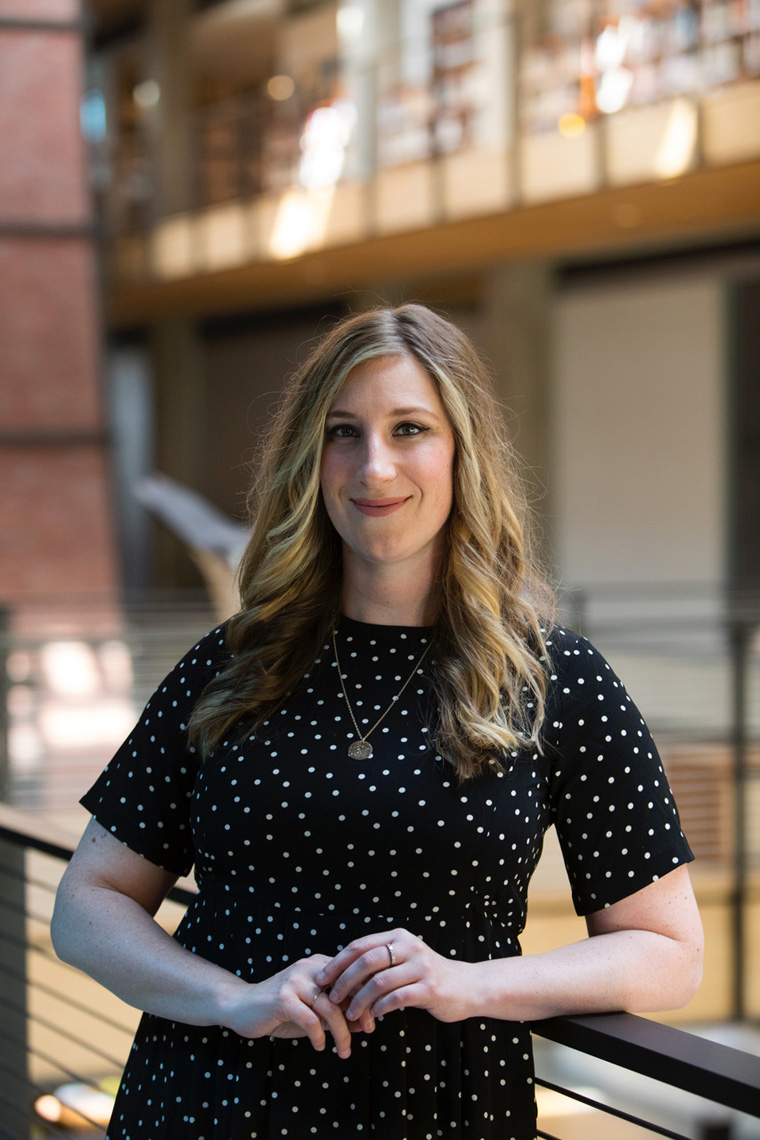
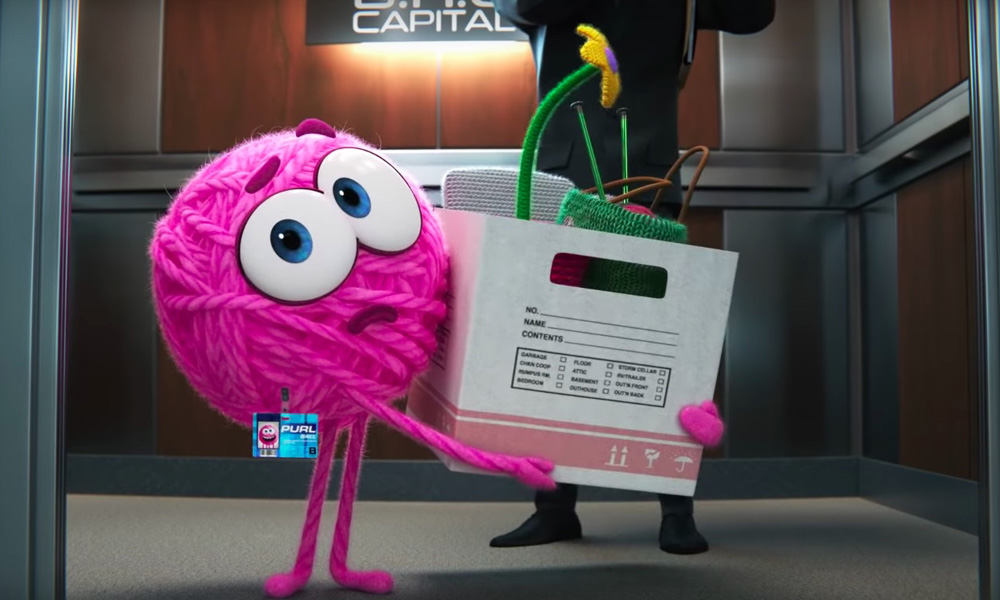
Kristen Lester,
Writer/Director, Purl
Pixar SparkShorts Program
When Kristen Lester was about eight years old, she was so in love with The Little Mermaid that she made her dad take her to see it nine times! The writer-director of Pixar’s acclaimed debut SparkShorts film Purl says the movie hit her like a ton of bricks. “I was big into drawing, so from then on, I was either going to be a mermaid or be an animator!” she explains.
After getting her first job cleaning up animation for cereal commercials, the Victoria, B.C. native soon found herself work on movies such as Epic and TV shows such as Sym-Bionic Titan, Legends of Oz: Dorothy’s Return and Special Agent Oso. Among her many animation idols, Lester names Mary Blair, Marc Davis, Glen Keane, Mamoru Hosoda, Isao Takahata, Hayao Miyazaki, Nora Twomey and Tomm Moore. She also mentions that she fell in love with animation because it combines three of her greatest loves: drawing, storytelling and filmmaking.
Lester was chosen to make her new short Purl by the exec producer of the SparkShorts program at Pixar, Lindsey Collins. She says the short, which centers on a pink ball of yarn trying to fit in at a male-dominated start-up, was inspired by her own experience as a woman in animation. “I was often the only woman in the room early on in my career,” she recalls, “and so I wanted to make a short that reflected that experience.”
It took Lester and her team of eight core people about six months to make the short. “Being a first time director, our short schedule and our limited budget were some of our challenges, but I was lucky to have such a supportive team that helped me deal with them,” she notes. “Looking back now, I love how fuzzy Purl ended up! Her fuzz was grown from the same technology that Pixar used on Brave, which I thought was just awesome. Any time Purl is backlit in a shot I have a tiny smile inside.”
Now that the short has finally been released online, Lester says she’s ready to take some time off before she goes back to her job as head of story on an upcoming Pixar movie. “I was directing the short and being head of story, so I’m looking forward to finding a beach somewhere and taking a long nap when my time on the next thing is up. After that, I want to continue making films! I’m excited to tell more stories.”

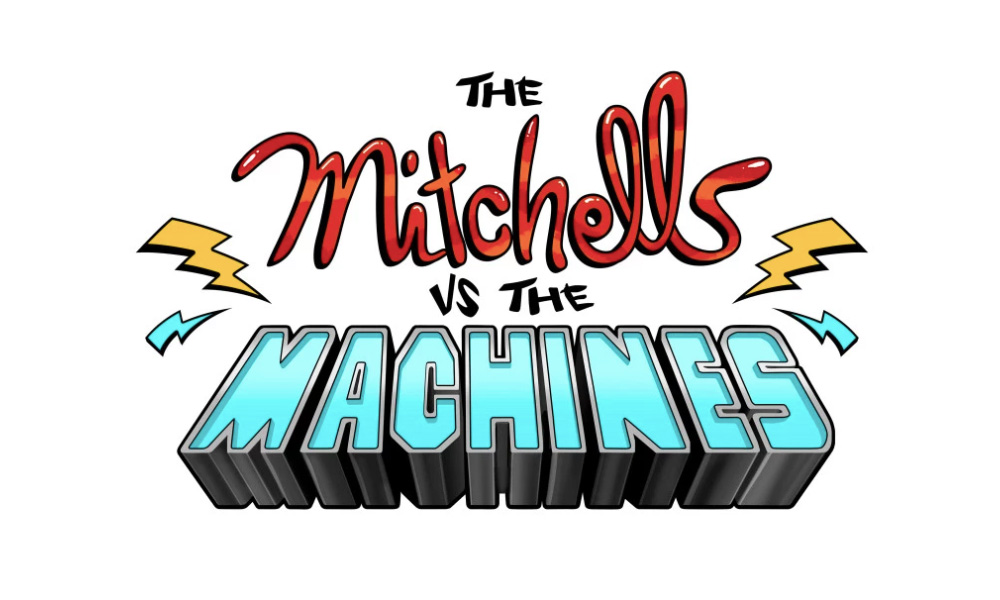
Guillermo Martinez
Head of Story, The Mitchells vs. the Machines
Sony Pictures Animation
When Guillermo Martinez was only five years old, he got his heart set on the Disney Villains book and begged his mother to buy it for him. “It was the greatest Christmas present I’ve ever gotten,” says the 37-year-old animation pro. “I would read it every night. My desire to be an animator really kicked in when I went to Disney/MGM’s Art of Animation resort. As a kid, getting to watch 2D Disney animators was a revelation. At that point, I knew that animation was my calling.”
Born in Bayamón, Puerto Rico, Martinez got his first big break when he was hired to work on a couple of projects at Portland’s Laika Studios, one of which was Kubo and the Two Strings. “It was an amazing experience to work with story crew in that film,” he says. “I learned so much from some of the best story artists in the industry. After Kubo, I was asked to help Chris Butler on his film Missing Link, and got to board some great sequences in the film.”
This year, Martinez is head of story on Sony’s upcoming movie The Mitchells vs. The Machines, directed by Michael Rianda. “The best way to describe the film is as a road trip/robot uprising movie for the whole family,” explains Martinez. “It’s been without question the most gratifying professional experiences of my life. It’s super rare when I get to work on a project that matches my comedic sensibilities so closely. We’ve lucked out with the talent on this movie! I love that almost everyone in the film is both young and hungry to make the funniest, coolest movie ever.”
Citing Satoshi Kon, Chuck Jones, Masaaki Yuasa, Peter Chung, Brad Bird, Ward Kimball and Chris Sanders as some of his idols, Martinez points out that Paranoia Agent and Liquid Television had a profound effect on him as a young man. “The Simpsons was also a revelation,” he notes. “The moment my mother banned me from watching it I knew that the show was something special. To this day, no piece of entertainment has shaped me as a writer/animator/storyteller like The Simpsons!”
Martinez says the best piece of advice he can give wannabe animators is, “Being technically skilled can get you a long way, but nothing speaks louder than making sure that your work has your voice in it.” He adds: “If something happened to you that is crazy, hilarious and you feel that other people would identify with, write it down. Turn it into a short. Draw it and post it on your Tumblr. Show the world the amazing storyteller that you are!”
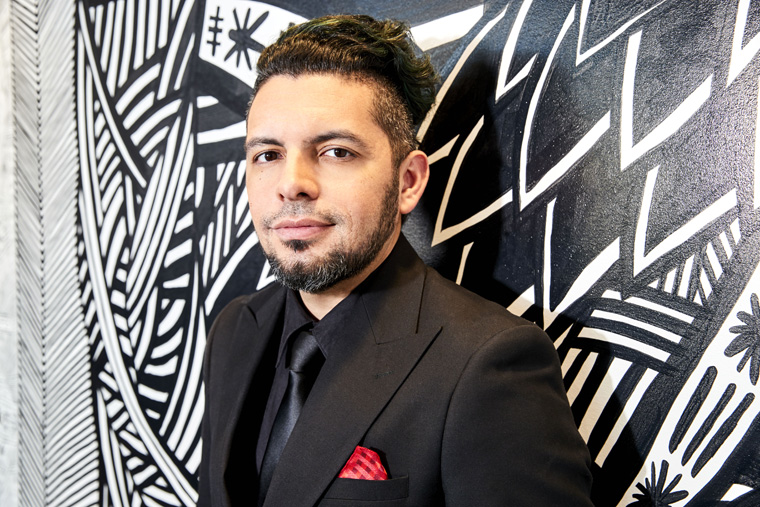
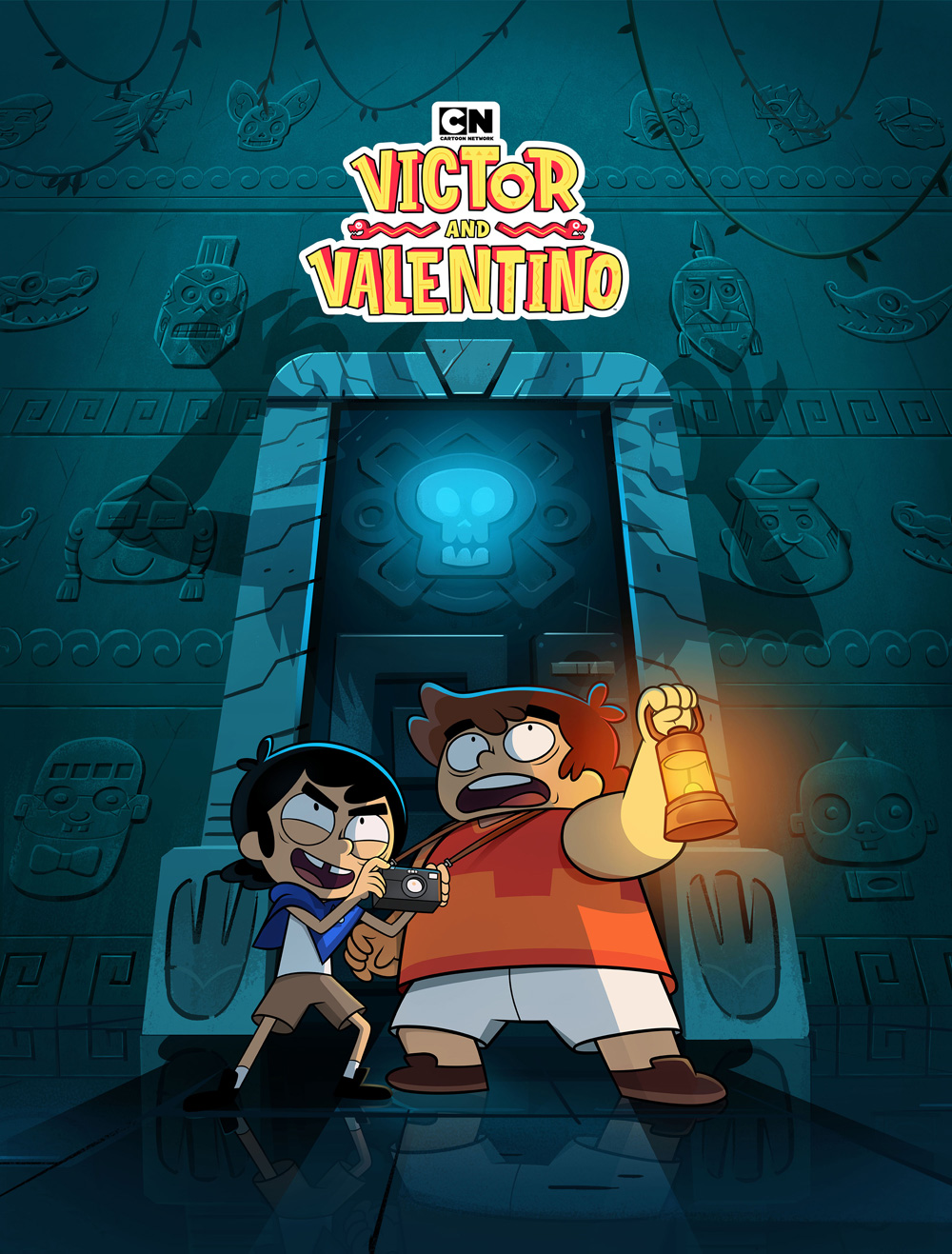
Diego Molano
Creator, Victor and Valentino
Cartoon Network
Diego Molano’s mother treasures a framed portrait of Ernie and Bert that her son drew when he was only four years old. “I just recently saw it, and it wasn’t too off model!” says the talented artist, whose new animated series Victor and Valentino premiered on Cartoon Network last month. “I just loved drawing characters that had great appeal, like Kermit, Mario or Daffy Duck.”
These days, the 36-year-old Miami native is heavily entrenched in his own charming animated world of Victor and Valentino, which follows the adventures of two half-brothers seeking out the supernatural creatures of Mesoamerican folklore in their small town of Monte Macabre.“I love how deep I get to dive into my favorite subject, mythology,” says Molano. “I’ve always been inspired by the great mythologies of the world, but especially the Mesoamerican mythologies of pre-Hispanic indigenous people of the Americas. I think these myths and legends are so cool and so not talked about compared to Greek/Roman/Egyptian/Norse myths. So, I am grateful I get to share my enthusiasm and affection for these stories with people that might not have heard of them.”
Molano, who has worked on shows such as The Powerpuff Girls and Black Dynamite, says the biggest challenge was wrangling large, epic scale, sometimes adult-themed myths/stories, into small, 11-minute, digestible content rated for kids. “Sometimes the myths are so abstract and so ethereal, that it’s hard to tie them down to a more realistic tangible world … but that’s where the fun lies!”
The talented toon creator names Peter Chung, Mike Judge, Shinichiro Watanabe, Hiroyuki Imaishi, Matt Groening, Henry Selick, Jamie Hewlett, Tim Burton and Jim Henson as some of his heroes and influences. He got his first big break in the business when he landed an internship at L.A. studio Titmouse. “I packed my stuff and flew to California, and after a while, they offered me an official gig as a clean-up artist on this amazing show called Superjail!. That’s where I had to draw and track all the tattoos on all the inmates. It was a lot of work, but in the end, it was worth it!”
As for general animation career tips, he advises, “Make sure you choose subject matter that you find irresistible and that you have an almost insatiable lust for. If you do this, your creative gasoline will be infinite, and you will never get tired of it. For example, If I wasn’t an artist, I’d probably be an archaeologist out there somewhere on an excavation, on the brink of discovering new things to add to the mythology of Mesoamerica!”
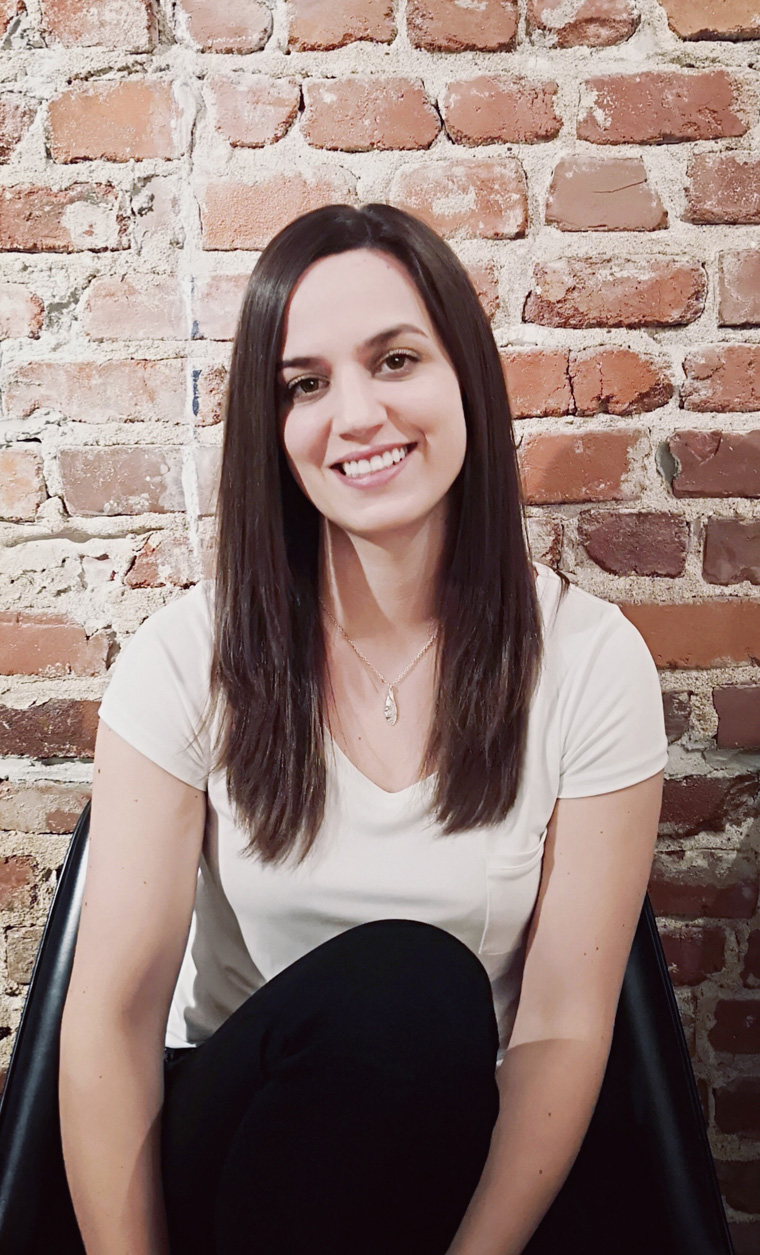

Marianne Morency
Animator
Framestore
Framestore animator Marianne Morency loves bringing CG creatures to life and seeing them interact with live-action actors. As the 33-year-old Quebec City native puts it, “It’s hard to replace that feeling you get when what was just a digital puppet on your screen begins to come alive! I also love the people we work with. Our industry is filled with people who are each as passionate as the next, and it resonates.”
Morency was interested in the arts at an early age, but her journey into animation and vfx happened by chance. After studying graphic design in college, she realized that she was drawn to animation, so she enrolled in a pilot program at Laval University. “Having been a big fan of Disney movies growing up, I fell in love with it,” she notes. “I also really loved all things dinosaurs growing up, so The Land Before Time and Jurassic Park were important movies for me. I also really loved Bambi and The Fox and the Hound. Basically, I liked anything with creatures and animals! In retrospect, it’s probably no coincidence why all those years later I found myself drawn to visual effects and creature animation.”
After landing a job at Quebec City’s Squeeze Studio, she got recruited by Frima Studio to work on a French-Canadian movie, which was followed by contract work on movies such as Jupiter Ascending and Paddington. “That’s when I fell in love with vfx, and I’ve been with Framestore in Montreal ever since,” she says. Since then, she has worked on many notch features including Beauty and the Beast, Ghost in the Shell, Paddington 2, Fantastic Beasts: The Crimes of Grindelwald and Mowgli: Legend of the Jungle.
Morency says one of the main challenges of working in vfx is that regardless of the complexity of the shot you’re working on, it’s pretty unforgiving. “You’re always trying to find a sweet spot between what looks real and what is stylized,” she explains. “I think most audience members are pretty reactive to things that look off or uncanny, so it’s our job to try to convince them that what they’re seeing is real.”
These days, the busy artist is working as lead animator on Tom McCarthy’s upcoming movie Timmy Failure, which centers on a young boy who believes he runs a detective agency with an imaginary giant polar bear. She says her future plans include improving her leading skills and continue growing as an animator. “There is always something to learn in animation,” she notes. “Eventually, I would love to become an animation supervisor.”
Her tips for newcomers are pretty straightforward. “Be open to feedback and input, and understand that it’s always a team effort,” she advices. “The other students or people you work with are a goldmine, so use them for second opinions or knowledge!”
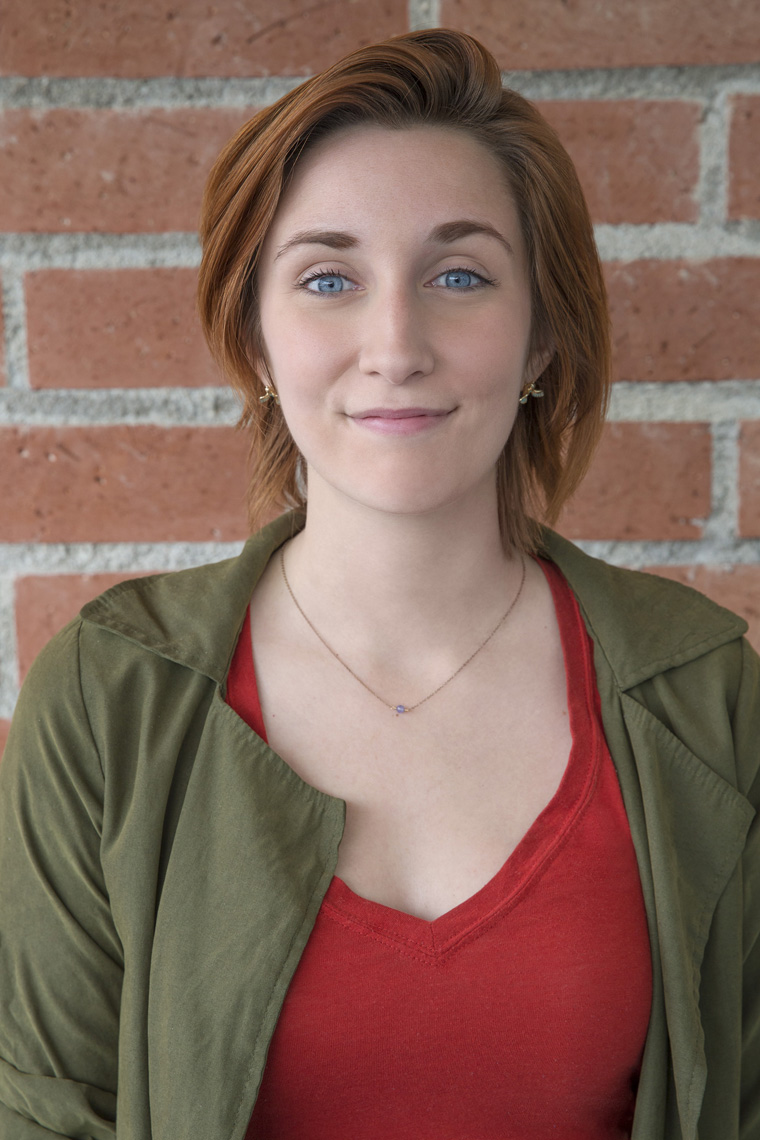

Dana Terrace
Creator, The Owl House
Disney Channel
There are not many children’s animated show creators who confess that one of their biggest influences is 15th century Dutch painter Hieronymus Bosch! Perhaps that’s why there is so much anticipation building around Dana Terrace’s upcoming Disney Channel series The Owl House. Terrace, whose show is slated for an early 2020 premiere, says she is inspired more by the work of artists such as Bosch, John Bauer, Remedios Varos and the puppetry of Jim Henson than any animated work. “There’s so much animation out there already that I’d rather look at what hasn’t been animated yet,” says the gifted 28-year-old Hamden, Connecticut native. “That’s why I love these artists.”
As a young girl, Terrace used to sneak into the living room to watch cartoons and copy what she liked in her flip books. “As long as it was animated, I was there — The Simpsons, Pokémon, The Powerpuff Girls, South Park, Studio Ghibli films, everything,” she says. “When I turned 16, I made the conscious decision to go into animation as a career after someone told me I couldn’t. Since then, I’ve worked every day to get a chance to work in the animation industry and feel incredibly fortunate to have been able to turn this dream into a reality.”
After a few studio internships, Terrace landed a job as storyboard revisionist on Disney’s Gravity Falls when someone discovered her art blog and sent her a storyboarding test. She says she had a wonderful experience on that show and couldn’t have asked for a better first gig.
Terrace attributes the concept for her new show to three specific sources: “First, I have always wanted to tell a story about a rough-around-the-edges mother figure, based off of my aunt, nana and mother who raised me. Second, the main character Luz evolved from late-night conversations I would have with my roommate and close friend, Luz — how we would always imagine being whisked away to a magical world when we were younger. Third, I love Bosch’s little creatures and the crazy worlds he creates! I wanted to see that animated. So I threw all these ingredients into a pile and whammo bammo, out came The Owl House!”
When asked to offer some solid advice to newcomers, Terrace says frankly, “Learn how to discern constructive critique from harmful critique. Know your critic’s motivation. Are they genuinely trying to help you, or do they just want to put you down? Learning to distinguish from the two can save you years of heartache and help you pinpoint what you actually need to improve upon in your work!”










